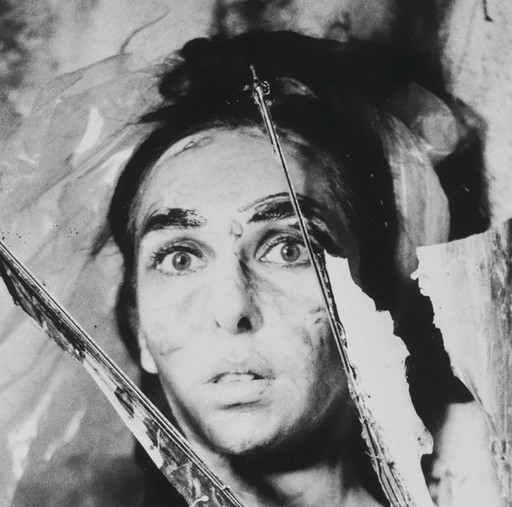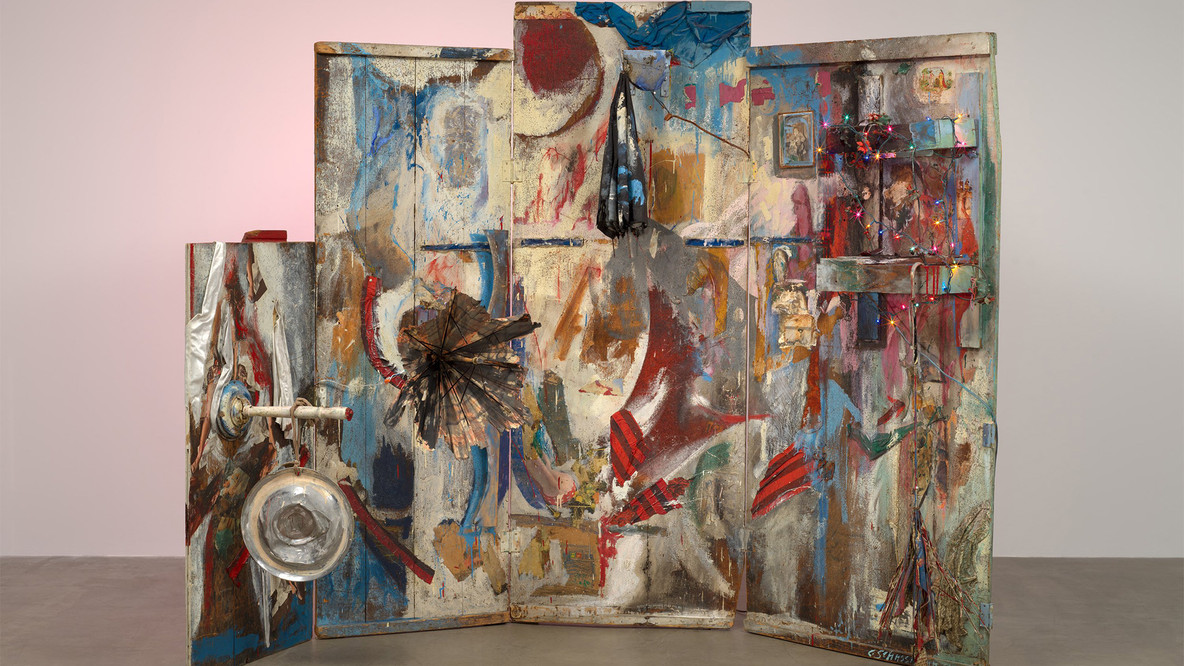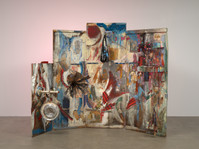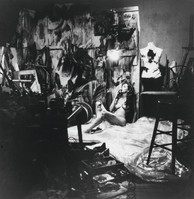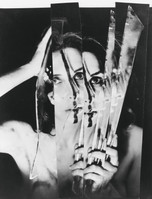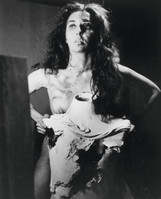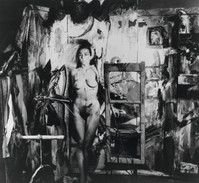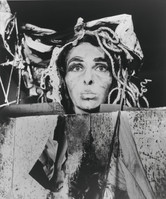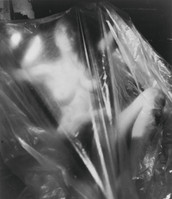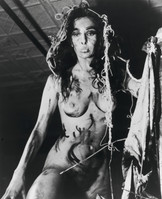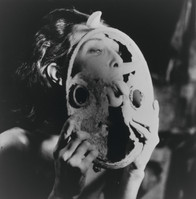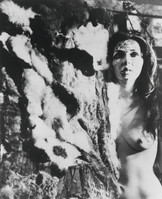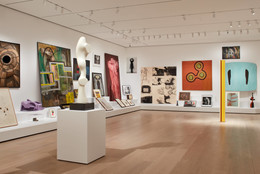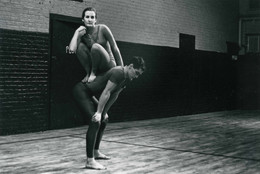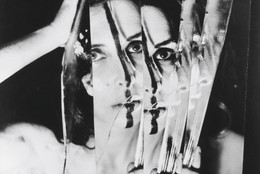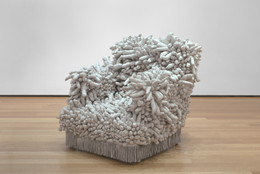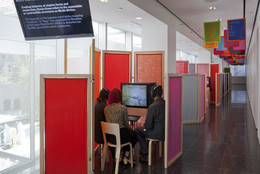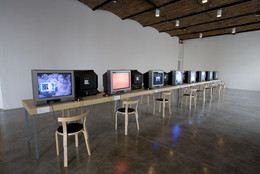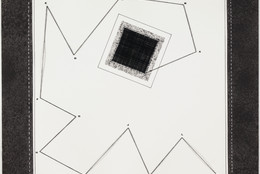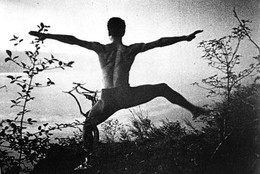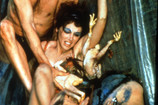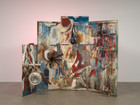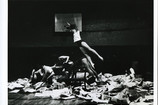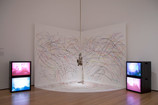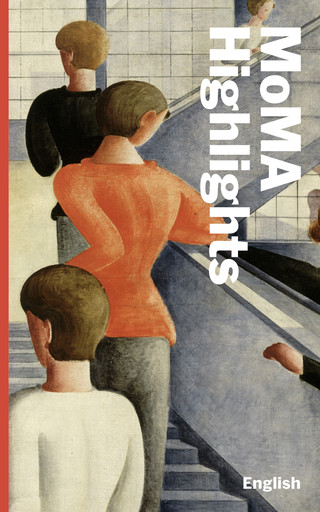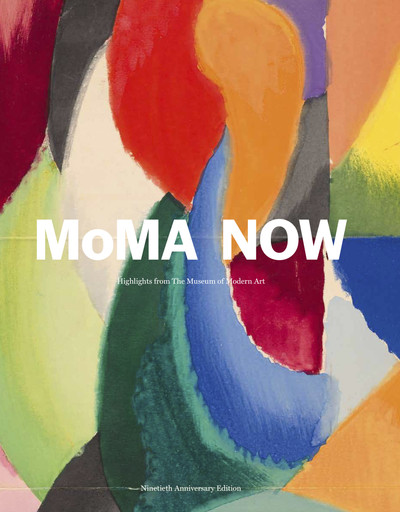“I wanted my actual body to be combined with the work as an integral material.”
Carolee Schneemann
In 1961, after completing her MFA in painting at the University of Illinois, Carolee Schneemann moved to New York. She gravitated toward an emerging Downtown performance scene, home to the experimental avant-garde artist collectives Living Theater and Judson Dance Theater, the latter of which she was a founding member. In that setting, she felt she was “a painter who had in effect enlarged her canvas,” now using the stage as a three-dimensional space to make compositions with bodies and a range of materials. In Meat Joy (1964), for example, Schneemann orchestrated a performance in which scantily clad participants interacted with various forms of animal flesh and other materials: raw fish, chickens, sausages, wet paint, plastic, rope, and scraps of paper.
When Schneemann arrived in New York, small manufacturing was in decline and old industrial spaces had become available to artists. Like many in her generation of artists, she was short on funds and hungry for space, so she settled downtown in a studio on West 29th Street, in a former fur manufacturer’s workshop. Large enough to live and make work in—and for people to gather and perform in—the space encouraged a new kind of expansive artistic practice. Four Fur Cutting Boards (1962–63) pays homage to this loft culture with elements both old and new: Schneemann integrated cutting boards and scraps of fur left by the furriers with glass, mirrors, photographs, fabric, colored lights, a hubcap, moving umbrellas, and other motorized elements. Adding broad, sweeping, gestural brushstrokes—traces of her bodily motion echoed by the movements of the machine parts—the artist created what she called an “exploded canvas.”
Schneemann also used her loft as a setting for performance-based projects, including Eye Body: 36 Transformative Actions (1963). She had the Icelandic artist Erro take photographs of her posing naked—her body painted to reinforce the connection between the stroke of paint and the artist’s body—among various materials, including feathers, mirror shards, and snakes, as well as Four Fur Cutting Boards. “I wanted my actual body to be combined with the work as an integral material,” she wrote at the time.
Schneemann developed her approach to making art in dialogue with action painting, a technique pioneered by Jackson Pollock, in which he flung, dripped, and poured paint onto the canvas in dramatic, expressive physical gestures. Fed by feminist thinking of the 1960s and 1970s, she highlighted her own physical experience and point of view in her art. In Fuses (1964–67), for example, she filmed herself and her partner, James Tenney, having sex and then exposed the deeply personal film footage to paint, fire, and acid, and cut, scratched, and layered it into a vibrant celluloid collage.
Schneemann’s interest in the relationship between power and bodies has prompted her to explore the Vietnam War, the Lebanese Civil War, and the September 11 attacks in multimedia installations and films. At the core of Viet Flakes (1965), Souvenir of Lebanon (1983–2006), and throughout her body of work as a whole is a concern with the way images, especially those found in mass media, shape our regard for others.
Introduction by Emily Liebert, Associate Curator of Contemporary Art, Cleveland Museum of Art, and former Curatorial Assistant, Department of Painting and Sculpture, The Museum of Modern Art
